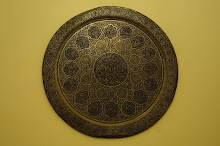
“The Middle East is the invaded civilization: it is the occupied territory par excellence.”
The Lebanese coast consists of a series of regular rock outcroppings reaching out into the sea. Some of the most well known are Ras En-Naqoura on the border with Israel and Chekka between Byblos and Tripoli in the north. One such jutting is known by the "Dog River" (or "Nahr El Kalb") that flows by it into the Mediterranean.
These massifs separate areas of Lebanon, creating coves, and bays - effectively districts - helping to define the geography and even the politics of the area (the local "geopolitics"). They create separations and serve to point the locals outwards towards the sea, rather than inwards towards each other.
The Dog River was also a key passage for any army moving along the Lebanese coast. It was sufficiently dramatic and scenic that it inspired the conquerors to chisel their passage in stone. Each left a plaque announcing himself usually on his way elsewhere: Ramses II, Nebuchadnezzer, Alexander the Great, the Roman Emperor Caracalla, Salah al-Din, and Napoleon III of France were all here. In one glance, the tablets at the Dog River speak of the passage of armies and the multi-layered and convoluted history of the Middle East.

The Middle East has been the thoroughfare of conquest because it stands at the intersection of the continents. It has served as a commercial and cultural crossroads between Asia, Europe and Africa; a kind of permanent distribution network of scriptures and goods, as well as the locus for a clash of cultures and peoples - and the very human reflexes of defence that are then provoked.
All cultures in the Middle East have a long memory of conquest and the brutal tides of history. Cities like Sidon, Jericho, and Aleppo have each been ransacked over and over again and contain the sediments of devastation beneath today's streets. The Mongol invasions, the rule of the Byzantines, the cruelty of the Crusaders, or the arrival of the Islamic faith from the Hijaz in Arabia, each left its impact in a bristling civilization - and in the traumas of the local inhabitants.

All cultures in the Middle East have a long memory of conquest and the brutal tides of history. Cities like Sidon, Jericho, and Aleppo have each been ransacked over and over again and contain the sediments of devastation beneath today's streets. The Mongol invasions, the rule of the Byzantines, the cruelty of the Crusaders, or the arrival of the Islamic faith from the Hijaz in Arabia, each left its impact in a bristling civilization - and in the traumas of the local inhabitants.

Hyper-vigilance, chronic distrust of outsiders and concern about the future would seem to be natural reactions to this longstanding process of invasion and destruction. This naturally led to tight belonging and identification within a group - once upon a time, a critical survival mechanism in an environment of regular threat. If you and your group did not stick together, the game was over.
Issues of identity and belonging in the Middle East are thus unconsciously understood as existential – or so they appear. Survival techniques became cultural habits over time. The passage of conquerors is not just carved on the rock of the Dog River, it is etched into the amygdylas of the people of the region and perpetuated today in their cultural habits.
Therefore, the people of the region come to their challenges today with their minds occupied with past trauma and past responses which seemingly need to be relied upon. A need to protect and maintain traditions that ensure survival, including close, almost cult-like, group-belonging appears essential.
In a mutable world, however, the challenges ahead today - environmental, economic and political - may require new responses based on more reflective and holistic answers rather than the reflexes of history played out over and over again. "Eye for an eye" or "kill or be killed" may have once been essential but today they may very well be the instruments of extinction.

Issues of identity and belonging in the Middle East are thus unconsciously understood as existential – or so they appear. Survival techniques became cultural habits over time. The passage of conquerors is not just carved on the rock of the Dog River, it is etched into the amygdylas of the people of the region and perpetuated today in their cultural habits.
Therefore, the people of the region come to their challenges today with their minds occupied with past trauma and past responses which seemingly need to be relied upon. A need to protect and maintain traditions that ensure survival, including close, almost cult-like, group-belonging appears essential.
In a mutable world, however, the challenges ahead today - environmental, economic and political - may require new responses based on more reflective and holistic answers rather than the reflexes of history played out over and over again. "Eye for an eye" or "kill or be killed" may have once been essential but today they may very well be the instruments of extinction.














No comments:
Post a Comment